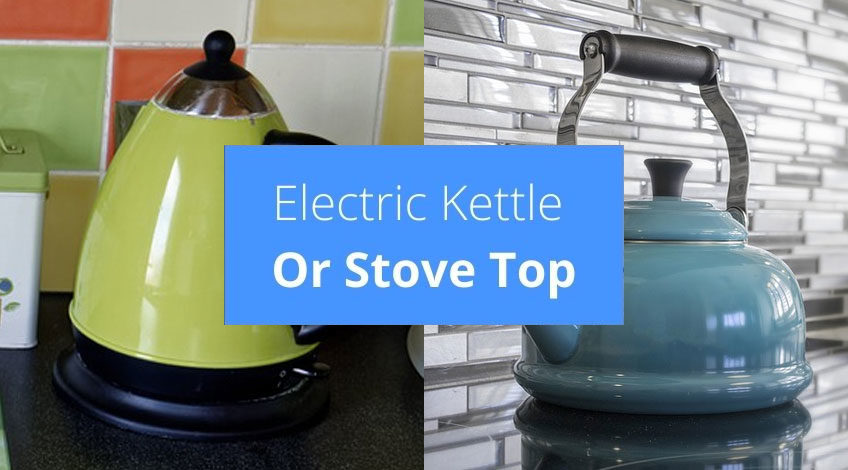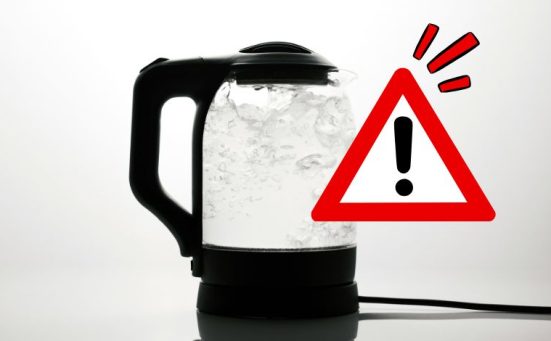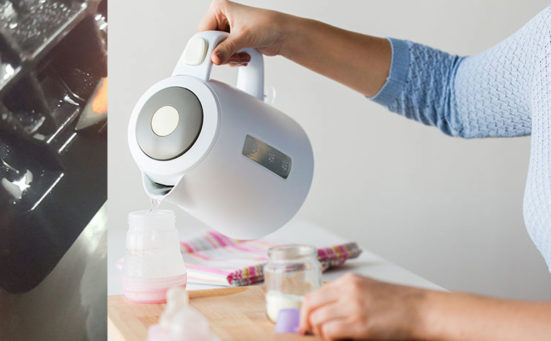
Which Is More Energy Efficient Electric Kettle Or Stove Top?
We get asked this question often, and on the face of it, it’s a tough one to answer, how do we quantify energy-efficiency? So we looked into it a bit closer, and we were surprised by the results. We hope you are too.
How Do Electric Kettles Work?
First, let’s look at the way electric kettles heat water. Either inside the kettle (at the bottom) or on the underside of the base of the kettle is a heating element. If it’s inside it will be a coil-shaped piece of metal, underneath it’ll be a metal plate. Either way, electricity is passed through this heating element, the resistance of the metal creates heat which in turn heats the water.
Modern electric kettles are insulated to prevent heat loss through the sides and the top so they are more efficient now than older electric kettles used to be.
Popular Electric Kettles
- The brushed stainless steel kettle heats up quickly is easy to clean and will not discolour regardless of use or age
- Quiet boil technology makes this a hot favourite for people in open plan living spaces busy households and those who value peace and quiet With their brew
- A rapid boil zone indicator within the kettle allows you to fill just the right amount of water and boils one cup super-fast taking only 45 seconds
- Textured Design – With a honeycomb-textured finish on premium black plastic, this kettle brings style to your kitchen with every brew you make.
- Rapid Boil – With internal 1/2/3 cup indicators, a speedy brew has never been easier. Simply fill your kettle up with the amount of water you need, and Boil One Cup in 43 Seconds*.
- 1.7 Litre Capacity – That’s why the Honeycomb Kettle has an impressive 1.7L Capacity. The perfect size to cater for all, this kettle makes sure your every boiling need is taken care of.
- Style on a Budget – Combining a high gloss finish with matt accents for a contemporary feel, meaning it will bring style to any kitchen work top.
- Rapid Boil Function – If you’re one for a sneaky brew the rapid boil feature means you can have a brew in hand in under one minute (based on one 235ml cup)
- 1.7 Litre Jug – Big enough to make up to six cups, making it an ideal kettle for family homes.
How Do Stove Top Kettles Work?
Stovetop kettles work on a similar principle, the base of the kettle is subjected to heat from the hob, this, in turn, heats the water inside the kettle. The base of the kettle is still subject to a heat source that heats up and heats any water inside.
Popular Stove Top Kettles
- Enamelled steel kettle with heat-resistant, phenolic handle and whistle, serves up to three cups
- Suitable for all hob types, including induction, ceramic, electric, gas and AGA cookers
- Elegant design, wide base for efficient heating, steady pouring thanks to upright, handle position, 5-year guarantee
- TRADITIONAL CHARM: Add a touch of nostalgia to your kitchen with the VonShef stovetop kettle, finished with an elegant silver satin coating for a sleek and modern twist to a well-loved vintage design.
- STRONG & SAFE: Your durable teapot is constructed from corrosion resistant stainless steel with a heat conductive aluminium base and a silicone cool grip lid and ergonomic handle, for endless boiling…
- LARGE CAPACITY: Thanks to the generous 2.5L capacity, your whistling kettle is perfect for when family and friends come over, whether you’re serving up brews or preparing large quantities of pasta.
- High-polished stainless steel construction for lasting durability and timeless elegance
- Non-drip pouring spout ensures mess-free pouring every time.
- Cool touch handle for safe and comfortable handling, even when the kettle is hot
How Long Does Water Take To Boil Stove Top Vs Electric Kettle?
Before revealing the figures for this we need to point out that there are different types of stoves, powered by different means. There are gas stoves, electric stoves and induction stoves. So how long does it take to boil water using the different types of heat source?
| Type of heat source | Time taken to boil 1 litre of water |
|---|---|
| Electric kettle | 3 minutes |
| Induction stove | 5 minutes |
| Gas stove | 7 minutes |
| Propane (camping) stove | 8 minutes |
| Electric stove | 10 minutes |
As you can see it’s faster to boil water in an electric kettle, but speed isn’t the only factor at play here. We’re looking at energy-efficiency not speed, so we have some more digging to do.
How Much Does Power Cost Per Unit?
Energy prices in the UK are based on kilowatts per hour, this is the industry standard nationwide for both electricity and gas.
- The average price in the UK for 1 kw/h of electricity is 14.37 pence.
- The average price in the UK for 1 kw/h of gas is 3.80 pence.
It’s looking good for gas right now, but we need to factor in a few other variables to get to the bottom of this.
What Is The Average Energy Consumption Of A Hob?
It’s good to know how long it takes to boil 1 litre of water, and how much power costs, but we need to know how much power appliances consume to find out which is the most energy-efficient.
The average gas hob has the equivalent power of 1.7 kW which would give a total cost of 6.46 pence per hour, which would cost around 0.073 pence to boil 1 litre of water – less than one penny.
The average electric hob has a power of 1kw/h which would cost 0.073 pence to boil the same amount of water -around the same as gas.
An induction hob is rated at 7.2 kw/h which would cost around 1 penny to boil 1 litre of water.
How Much Energy Does An Electric Kettle Consume

The average rate of an electric kettle is 2400 watts or 2.4 kw/h so it would cost around 2 pence to boil 1 litre of water in an electric kettle. So let’s look at the average price to boil 1 litre of water using all 4 methods and get the total costings.
| Method used | Cost in pence to boil 1 litre of water |
|---|---|
| Gas hob | 0.073 pence |
| Electric hob | 0.073 pence |
| Induction hob | 1 penny |
| Electric kettle | 2 pence |
If we exclude the induction hob because they are a pretty rare item in kitchens as yet (it’s a relatively new technology, it’s expensive to buy an induction hob and you need specialised pots etc.) we’re left with gas and electric stovetops and an electric kettle. In this case, the stovetop worked out cheaper.
So now we have 2 results but energy-efficiency is not just about cost and speed. Looking at electric kettles they have to be the most energy-efficient because there is no energy loss at all. The heat is transferred from the heating element directly to the water with no electricity loss. Whereas a kettle on a stove be it electric or gas will lose heat into the kitchen and up the outsides of the kettle. Let’s sum this up now.
| Appliance | Percentage of energy-efficiency |
|---|---|
| Gas hob with a kettle | 70% efficiency |
| Electric hob with a kettle | 70% efficiency |
| Electric kettle | 80% efficiency |
| Induction stove with a kettle | 85% efficiency |
So if the choice is between a conventional stove and an electric kettle, the electric kettle is the most energy-efficient. But overall an induction hob is the most energy-efficient way to boil water.
The fastest way to boil 1 litre of water is with an electric kettle, gas and electric hobs consume the least power to boil 1 litre of water, but the most energy-efficient form of water boiling overall is an induction stove followed by an electric kettle with both gas and electric hobs coming in last.
Environmental Impact
Natural gas is a much cleaner source of power than electricity. In fact, many modern electricity plants burn natural gas to generate electricity. Other ways of generating electricity all have an environmental impact, these include:
- Greenhouse gas emissions
Some forms of electricity are created by burning fossil fuels like coal or gas, the burning process creates greenhouse gases. - Water redirection
Water is used in the production of electricity either as a coolant or as steam to power turbines. - Pollution discharged into water supplies
This can be actual chemical pollutants or thermal pollution which is discharging water much hotter than the original temperature of the water in the water source. - Solid waste production
This can often be hazardous waste including but not exclusive to nuclear waste. - Land use and degradation
This can be power production sites, distribution lines, transmission lines, waste sites, fuel production, and hydro dams. - Damage to ecosystems
This can be due to water, air, waste and land pollutants, structural damage to land, forests etc.
These effects can also affect any people living nearby to these pollutants etc.
Renewable energy can cause just as many if not more serious environmental problems. For instance, the batteries needed to store power for electric cars, are made from a relatively rare metal that has been found on ocean beds. This can lead to environmental issues on the seabed and beyond. Wind farms destroy natural beauty spots etc.
Advice When Buying
If after reading this article you’ve come to the conclusion that you’d like to buy a stove top kettle, check out our buyers guide here. Alternatively, if you’ve decided to go for an electric kettle, read through our guide on energy saving electric kettles here.
Frequently Asked Questions
It is cheaper to boil water on the hob, but it takes longer and is less energy-efficient.
A stovetop kettle is better than an electric kettle for cost, but an electric kettle is slightly more energy-efficient.
Also, follow us on Pinterest ...









